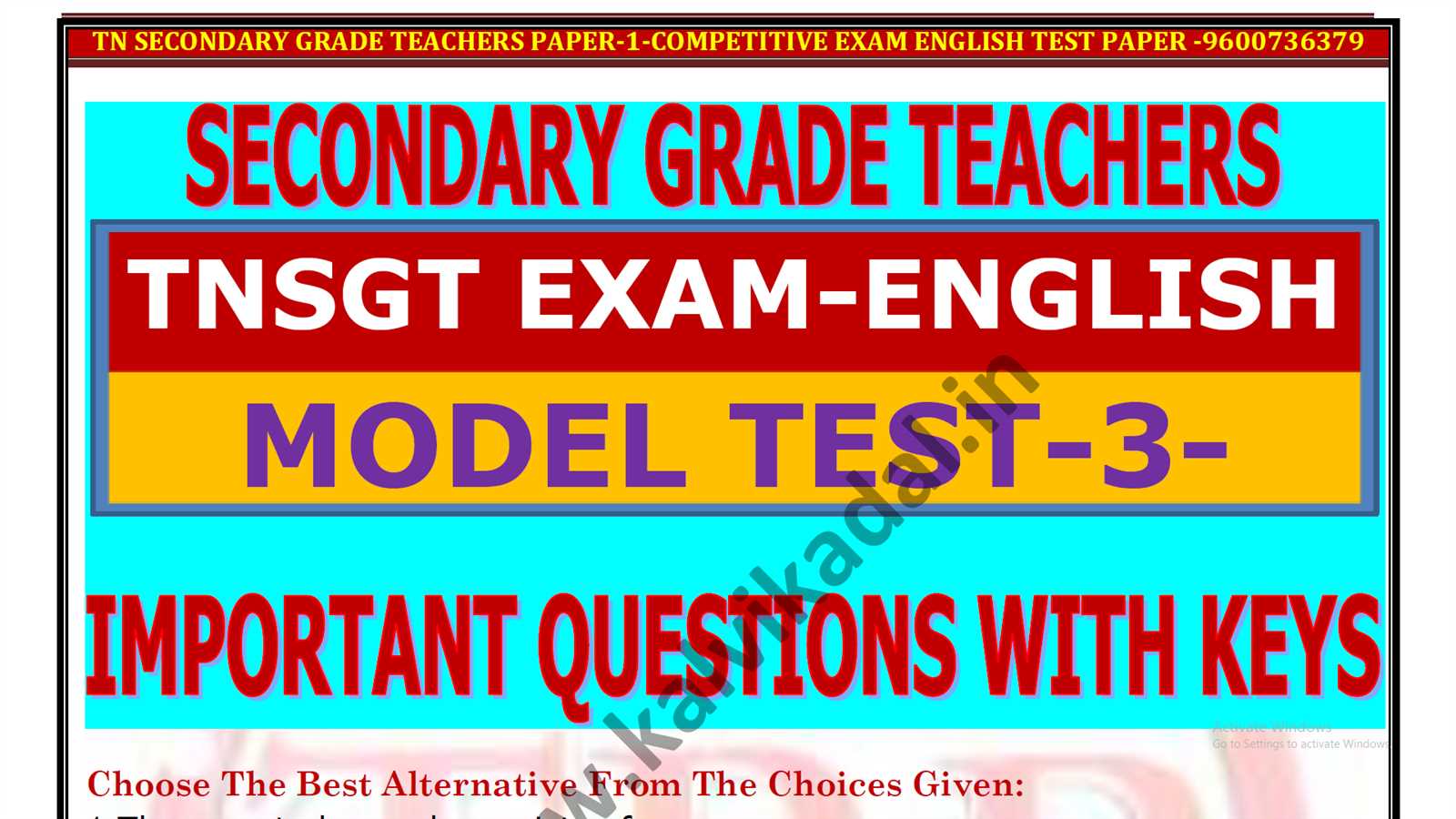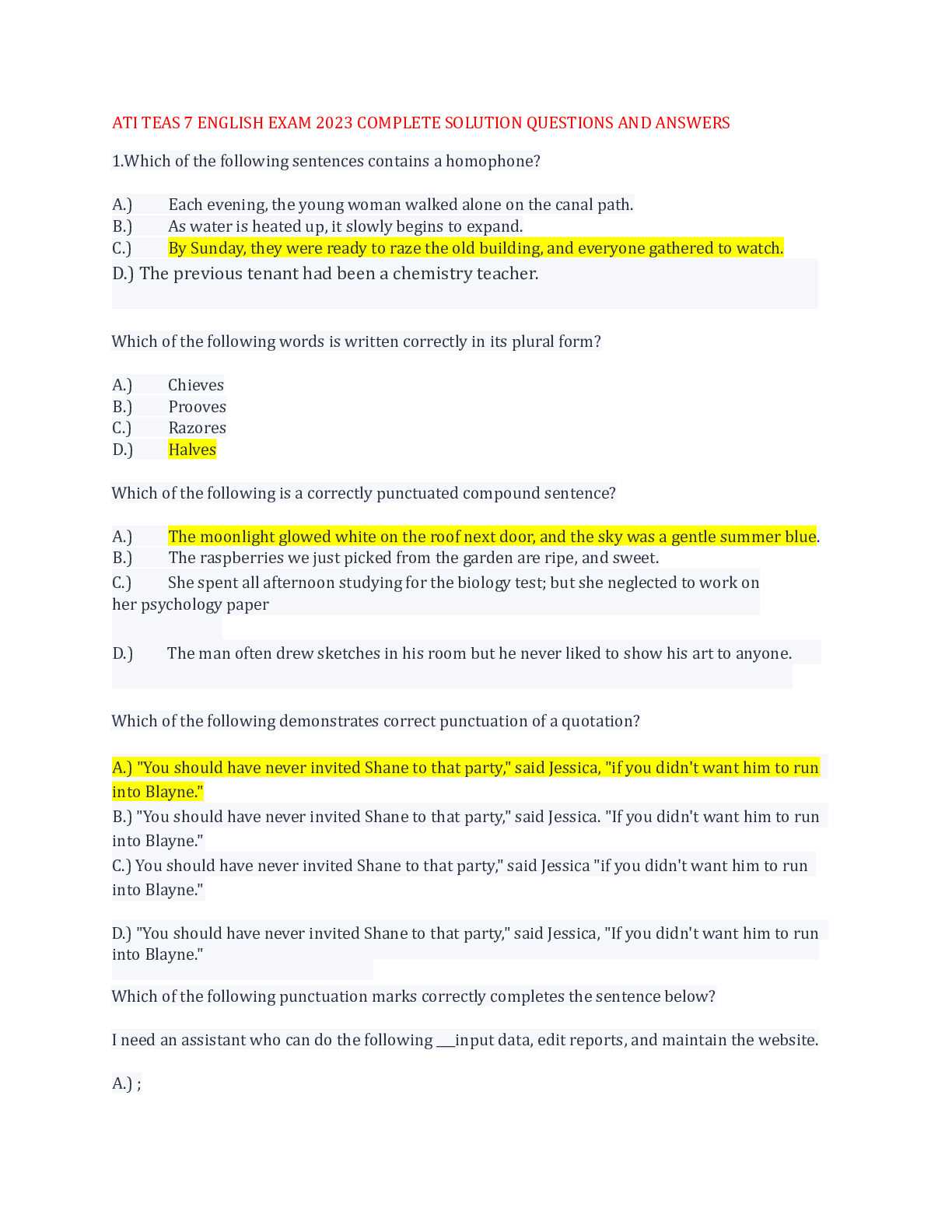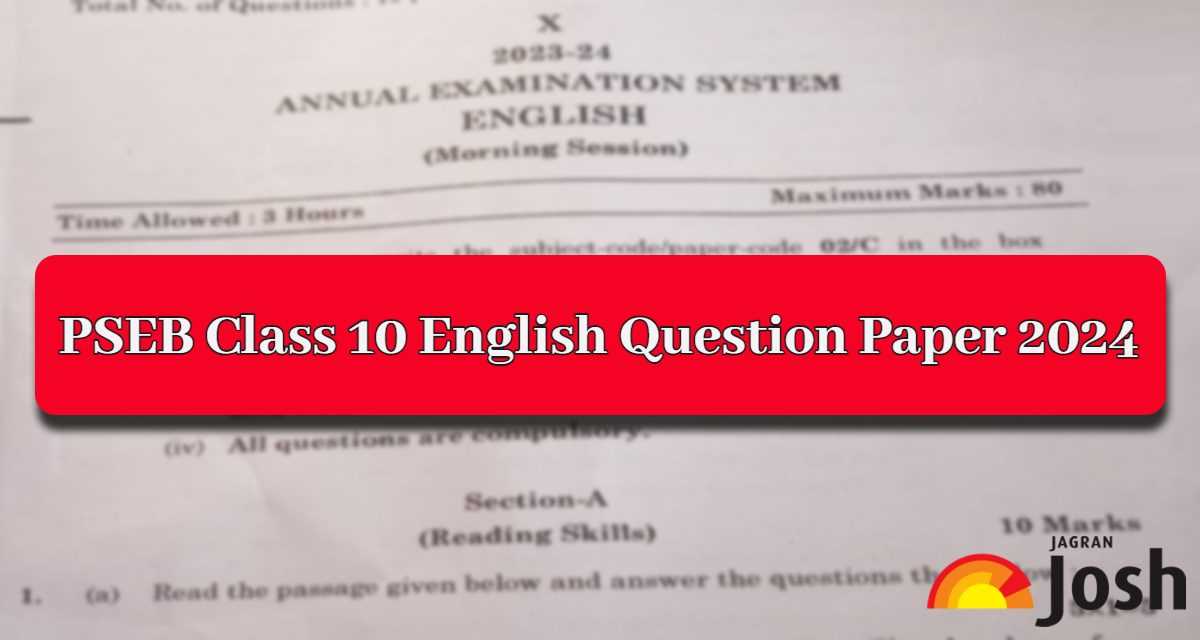
Success in written assessments relies on more than just knowledge of the subject; it requires the ability to structure and express ideas clearly. Whether it’s crafting a well-organized argument or presenting detailed insights, the way you formulate your responses plays a crucial role in achieving top marks. Understanding how to approach different types of prompts and managing time efficiently can significantly boost performance.
Effective preparation is key to building confidence and minimizing stress. By developing strategies for tackling various types of tasks, you can ensure that your responses are both comprehensive and concise. Organizing your thoughts, using appropriate evidence, and staying focused on the core message will help you stand out in any written challenge.
How to Answer English Exam Questions
Achieving success in written assessments requires more than just recalling facts; it’s about effectively conveying ideas in a structured and coherent manner. The key to performing well lies in understanding the prompt, organizing your thoughts, and presenting your response clearly and logically. The ability to break down complex instructions and translate them into well-structured replies is essential for maximizing your score.
Breaking Down the Prompt
Start by carefully analyzing what the task asks. Identify the main objectives and any specific instructions regarding the structure or type of response required. Focusing on these elements will help you avoid unnecessary details and stay on topic throughout your response. Prioritize the most relevant information, and plan how to address each part of the task.
Structuring Your Response
Once you have a clear understanding of the task, it’s time to organize your answer. A well-structured reply will not only demonstrate your comprehension of the subject but also highlight your ability to present ideas in a logical sequence. Start with a clear introduction, followed by the main body that develops your argument, and finish with a concise conclusion.
| Step | Action | Tip |
|---|---|---|
| 1 | Read and analyze the task carefully | Focus on key instructions |
| 2 | Plan your response | Outline the structure before writing |
| 3 | Write a clear introduction | Introduce the main argument or idea |
| 4 | Develop the main body | Use examples and evidence |
| 5 | Conclude effectively | Summarize your key points |
Understanding the Question Before You Begin
Before diving into a response, it’s essential to fully comprehend what is being asked. Often, tasks may appear straightforward, but small details in the instructions can drastically alter the approach. Careful interpretation of the prompt ensures that you address all requirements and avoid unnecessary confusion. By analyzing the task thoroughly, you can clarify your objectives and set yourself up for success.
Identifying Key Elements
Begin by pinpointing the most important aspects of the prompt. Look for action words such as “describe,” “analyze,” or “compare” which direct the type of response expected. These terms help define the structure and focus of your reply. Additionally, pay attention to any specific guidelines, such as word count limits or specific points to cover, to avoid straying off-topic.
Breaking Down Complex Prompts
If the instructions are complicated or multi-faceted, break them down into manageable components. Separate each part of the task and address it individually. This method not only makes the task seem less overwhelming but also ensures that every aspect is thoroughly explored. A structured breakdown provides clarity and direction throughout your response.
How to Manage Your Time During the Exam
Effective time management is crucial for success in any written assessment. Allocating your time wisely ensures that you can complete all tasks without feeling rushed or leaving parts unfinished. By creating a clear plan and sticking to it, you can maximize your performance and reduce stress during the test. Developing strategies for prioritizing tasks and managing time efficiently is key to achieving your best results.
| Step | Action | Tip |
|---|---|---|
| 1 | Read through all tasks | Identify the most time-consuming ones first |
| 2 | Allocate time to each section | Be realistic about how long each will take |
| 3 | Set strict time limits | Stick to your schedule to avoid rushing |
| 4 | Monitor time throughout | Check the clock regularly to stay on track |
| 5 | Leave time for review | Ensure you can revisit and improve your answers |
Breaking Down Complex Exam Prompts

When faced with a lengthy or complicated task, it’s essential to dissect the instructions into smaller, manageable components. By breaking down the prompt, you can better understand the specific requirements and address each part systematically. This method ensures that your response is organized and that no critical aspect is overlooked.
Step-by-Step Breakdown
Start by reading through the entire prompt carefully, then divide it into smaller sections. Focus on the key points and identify what is being asked in each part. This approach allows you to tackle each section individually and keep your response focused.
- Identify the main objective of the task.
- Look for keywords that dictate the type of response (e.g., explain, compare, argue).
- Highlight any specific details or examples that must be included.
- Note any limitations or constraints, such as word count or time restrictions.
Using a Structured Approach
After breaking down the task, create an outline that reflects the structure of your response. This will help you organize your thoughts and ensure each section is addressed clearly and concisely. Consider the logical flow of information, making sure that your response is easy to follow.
- Start with an introduction that outlines your approach.
- Develop the main body, addressing each point from the prompt in order.
- Conclude by summarizing your main points and providing any necessary final thoughts.
Effective Reading Techniques for Exam Success
Mastering effective reading techniques is essential for quickly grasping key information during a written assessment. By improving your reading skills, you can identify important details, understand complex tasks, and save valuable time. Being able to read critically and focus on relevant information will help you tackle prompts with confidence and accuracy.
Skimming for Key Ideas
Start by skimming through the material to get a sense of the main themes or points. Focus on headings, subheadings, and any highlighted or bolded text. This technique allows you to quickly identify the central ideas, which will help you orient yourself to the task and decide where to focus your attention.
Scanning for Specific Information
If the task requires finding specific details or examples, scanning is a useful technique. Move your eyes quickly over the text, looking for keywords or phrases that directly answer the task’s requirements. This approach allows you to pinpoint the exact information needed without reading every word in detail.
- Look for key terms: Focus on words related to the prompt.
- Highlight important details: Mark specific facts, dates, or figures that may be useful.
- Skip over unnecessary information: Avoid getting caught up in irrelevant sections.
How to Organize Your Answer Clearly

Clear organization is vital when responding to any written task. Structuring your response in a logical way not only makes it easier for the reader to follow, but it also helps you present your ideas coherently. By dividing your response into distinct sections and using an organized flow, you ensure that your points are clearly communicated and effectively developed.
Creating a Strong Outline
Before you begin writing, take a moment to plan your response. An outline helps you organize your thoughts and ensures that your reply has a logical progression. Identify the key points you want to cover, and arrange them in the order that best supports your argument or explanation.
- Introduction: Briefly introduce your main idea or argument.
- Main body: Develop your points in separate paragraphs, each focused on a single idea.
- Conclusion: Summarize your key points and provide a final thought or recommendation.
Using Clear Transitions
To improve the flow of your response, use transitional phrases between paragraphs and ideas. Transitions guide the reader through your argument and make it easier to follow your reasoning. Words like “firstly,” “in addition,” and “finally” help signal the progression of your thoughts and ensure your response remains coherent.
- Start each paragraph with a topic sentence that introduces the idea.
- Support your points with relevant examples or evidence.
- Link each paragraph with a clear transition to the next.
Mastering the Art of Essay Writing
Writing a well-crafted essay requires more than just putting thoughts on paper; it demands a structured approach that clearly communicates ideas while engaging the reader. A strong essay presents an argument or explanation in a coherent, organized manner, and each section plays an important role in supporting the main thesis. By mastering essay writing techniques, you can express your ideas with clarity and confidence.
Building a Strong Introduction
The introduction is your first opportunity to grab the reader’s attention. It should briefly introduce the topic and provide a clear thesis statement that outlines the main argument or point of the essay. A strong introduction sets the tone for the entire piece and guides the reader on what to expect.
- Start with a hook: Engage the reader with an interesting fact, quote, or question.
- State the main argument: Present the thesis clearly, outlining the direction of your essay.
- Provide context: Offer any necessary background information to help the reader understand the topic.
Developing the Body Paragraphs
The body of your essay is where you explore your argument in depth. Each paragraph should focus on a specific point, backed by evidence or examples. Ensure that each paragraph is logically connected to the previous one and contributes to the overall argument.
- Start each paragraph with a topic sentence: Introduce the main point of the paragraph.
- Provide supporting details: Use examples, facts, or data to back up your point.
- Use clear transitions: Link each paragraph to ensure a smooth flow of ideas.
By following this structured approach, you will be able to present a strong, cohesive essay that clearly communicates your ideas and arguments.
How to Use Evidence in Your Responses
Incorporating solid evidence into your written responses enhances the credibility of your argument and demonstrates a deeper understanding of the topic. Whether you’re providing facts, statistics, examples, or quotations, using relevant evidence not only supports your claims but also strengthens your analysis. The key is to integrate this evidence smoothly and explain how it connects to your main points.
Choosing the Right Evidence
Selecting the most relevant and persuasive evidence is essential. Avoid overwhelming the reader with excessive information; instead, focus on examples that directly support your argument. Whether using research findings, historical examples, or expert opinions, make sure the evidence you choose is appropriate and reliable.
- Use data: Numbers and statistics can provide strong support for factual claims.
- Include quotes: Cite experts or primary sources to back up your argument.
- Provide examples: Real-world or historical examples can make your points more relatable and convincing.
Integrating Evidence Smoothly
Once you’ve selected your evidence, the next step is to integrate it into your response in a way that flows naturally. Introduce the evidence clearly, and follow it with an explanation of its relevance. Avoid simply listing facts or quotations without discussing how they support your point.
- Introduce the source: Clearly state where the evidence comes from or who said it.
- Explain the connection: Describe how the evidence backs up your argument or point.
- Analyze the evidence: Offer insight into why it is significant and what it shows about the topic.
By using evidence effectively, you provide strong support for your ideas, making your response more persuasive and grounded in factual information.
How to Avoid Common Mistakes in Exams
Many individuals struggle with certain errors during assessments that can easily be avoided with proper preparation and awareness. These common pitfalls often stem from a lack of attention to detail or rushing through the task. By being mindful of these issues, you can reduce mistakes and improve your overall performance.
Pay Attention to Instructions
One of the most frequent mistakes is misinterpreting or overlooking the instructions. Carefully reading the guidelines ensures that you understand exactly what is required before you begin. Taking a few extra moments to review them can save valuable time and prevent unnecessary errors.
- Read the instructions thoroughly: Make sure you know what each section asks for.
- Highlight key points: Identify essential parts of the task to stay on track.
- Check the number of words or pages: Stay within any specified limits to avoid penalties.
Avoid Rushing Through Responses
Another common mistake is hurrying through your answers without fully thinking them through. This can lead to missed details, incomplete thoughts, or sloppy writing. Take your time to carefully construct each response, ensuring that you address all aspects of the task.
- Plan your time: Allocate specific time slots for each section to avoid rushing.
- Review your responses: Leave time to check for errors before submitting.
- Stay calm: Avoid panicking, which can lead to careless mistakes.
By paying attention to these common issues and taking the time to follow instructions and plan your responses, you will significantly improve the quality of your work and avoid unnecessary mistakes.
How to Stay Focused Under Pressure
Staying focused during high-pressure situations is a critical skill that can determine your performance. When time is limited and stress levels rise, it’s easy to become overwhelmed or distracted. However, by using effective strategies, you can maintain your concentration and ensure you stay on track to complete your tasks successfully.
Managing Stress and Anxiety
The first step to maintaining focus is learning how to manage stress. Anxiety can impair your ability to think clearly and make decisions. Techniques such as deep breathing, positive visualization, and taking short breaks can help calm your mind and allow you to regain control.
- Practice relaxation techniques: Deep breathing or meditation can help clear your mind.
- Visualize success: Picture yourself completing the task calmly and efficiently.
- Take breaks: A few moments of relaxation can help reset your focus and reduce anxiety.
Developing a Structured Approach
Having a clear plan and structured approach to your work can help reduce the feeling of being overwhelmed. Breaking tasks down into smaller, manageable steps makes it easier to stay focused on one part of the task at a time.
| Step | Action |
|---|---|
| 1 | Prioritize tasks and allocate time for each. |
| 2 | Work in short bursts, followed by a brief break to maintain concentration. |
| 3 | Review your progress and adjust your strategy if needed. |
By managing stress and having a clear, structured plan, you can maintain your focus and perform well, even under pressure.
Using Transitional Phrases to Improve Flow
Effective communication relies on the smooth connection of ideas. In written responses, transitions between sentences and paragraphs are crucial for maintaining clarity and ensuring that your points are logically structured. Transitional phrases help guide the reader through your argument, creating a cohesive and well-organized response.
Types of Transitional Phrases
Transitional phrases can be categorized based on their function within the text. Whether you’re adding information, showing contrast, or concluding an idea, these phrases help create seamless connections between different parts of your writing.
- To add information: “Moreover,” “In addition,” “Furthermore”
- To contrast ideas: “However,” “On the other hand,” “In contrast”
- To show cause and effect: “Therefore,” “As a result,” “Consequently”
- To conclude: “In conclusion,” “To summarize,” “Ultimately”
Using Transitions for Cohesion
Strategically placing transitional phrases ensures that your writing flows naturally and that the reader can easily follow your argument. For example, when transitioning from one point to another, using phrases like “Furthermore” or “In addition” helps signal that you’re expanding on a previous idea. Similarly, “However” or “On the other hand” prepares the reader for a shift in perspective.
By incorporating these transitions, your writing becomes more fluid, making it easier for readers to grasp the connections between your points. This improves the overall quality of your response and strengthens the impact of your argument.
Understanding and Addressing Exam Rubrics
Exam rubrics provide important guidelines and expectations for how responses should be structured and evaluated. They often outline key criteria, such as content relevance, clarity, organization, and the depth of analysis required. Understanding these rubrics ensures that you can tailor your responses to meet the specific requirements and achieve the best possible results.
By carefully reading the rubric, you can identify the key components that need to be addressed. For example, if the rubric emphasizes “critical thinking,” you should ensure that your response includes analysis and evaluation rather than just descriptive content. Additionally, if “clarity and organization” are highlighted, it’s essential to structure your answer logically, with clear introductions, arguments, and conclusions.
Paying attention to rubrics also helps in managing your time effectively. Knowing what is expected allows you to allocate time to the most important parts of your response, ensuring that each element is addressed thoroughly without wasting time on less relevant details.
How to Tackle Multiple Choice Questions
Multiple choice questions often test your ability to recognize correct information quickly. These types of questions present a statement or problem, followed by a set of possible answers, where only one is correct. To excel, it’s important to carefully analyze the options and use strategic techniques to maximize your chances of choosing the right one.
Strategies for Success

Start by reading the question thoroughly before looking at the answer choices. This helps you focus on what is being asked and prevents you from being misled by distractors. Once you have a clear understanding of the question, review all the options before making your decision.
- Eliminate obviously incorrect options: Remove any answers that are clearly wrong to narrow down your choices.
- Look for clues in the wording: Watch for keywords or phrases in the question that can help you identify the correct answer.
- Consider “all of the above” or “none of the above”: These options often appear in multiple choice tests. Consider them carefully, as they can sometimes be the right answer when the other options are partially correct or incorrect.
- Don’t second-guess yourself: Once you’ve made a choice, move on. Second-guessing can lead to confusion and errors.
Time Management Tips
When working through multiple choice items, time management is key. Don’t spend too long on any one question. If you’re unsure, mark the question and come back to it later. This will help you maintain a steady pace and prevent you from getting stuck on challenging items.
Preparing for Different Question Formats
Test assessments often come in a variety of formats, each requiring a different approach to demonstrate your understanding. Knowing the format in advance helps you tailor your preparation and optimize your responses. Whether you’re faced with multiple choice, short answer, or essay-style prompts, each type demands specific strategies for success.
To tackle various question types effectively, it’s essential to recognize the structure and purpose behind each format. Below are some common formats and tips for handling them:
Multiple Choice Questions
- Read the question thoroughly: Make sure you understand what’s being asked before looking at the options.
- Eliminate incorrect answers: Remove obviously wrong choices to increase your chances of selecting the correct one.
- Don’t rush: Take time to review all options before selecting your answer, as there may be subtle differences between them.
Short Answer and Fill-in-the-Blank
- Focus on keywords: Look for important terms in the question that can guide your response.
- Be concise: Provide clear and direct answers. Stick to the main point, avoiding unnecessary information.
- Check for units or specifics: If the question asks for specific details like dates, numbers, or names, make sure to include them.
Essay and Long-Form Responses
- Plan your response: Organize your thoughts before writing. Use an outline to structure your introduction, body, and conclusion.
- Stay focused: Address all aspects of the prompt and avoid going off-topic.
- Support your points: Use examples or evidence to strengthen your arguments and demonstrate depth of understanding.
By understanding the different formats and adjusting your approach accordingly, you can improve your performance and approach each question type with confidence.
Building Confidence in Your Writing Skills
Developing strong writing abilities is essential for expressing your ideas clearly and effectively in assessments. The more confident you feel in your writing, the more easily you can tackle complex prompts and present well-organized responses. Confidence doesn’t come overnight, but with consistent practice and the right strategies, you can enhance your skills and improve your performance.
One of the first steps to building confidence is understanding the structure of effective writing. Clear organization, a strong thesis, and logical flow are key components that support your argument. Practicing these elements regularly can help you approach writing tasks with ease.
In addition, reading regularly and analyzing well-written texts can also boost your confidence. By exposing yourself to high-quality writing, you can learn how skilled writers develop their ideas and use language effectively. Try to incorporate similar techniques into your own work, paying attention to sentence structure, vocabulary, and coherence.
Lastly, remember that confidence comes with practice. Don’t be afraid to make mistakes, as they are part of the learning process. Each time you write, you have an opportunity to improve and refine your skills. With time and effort, you’ll become more assured in your ability to express your thoughts in a clear and compelling manner.